
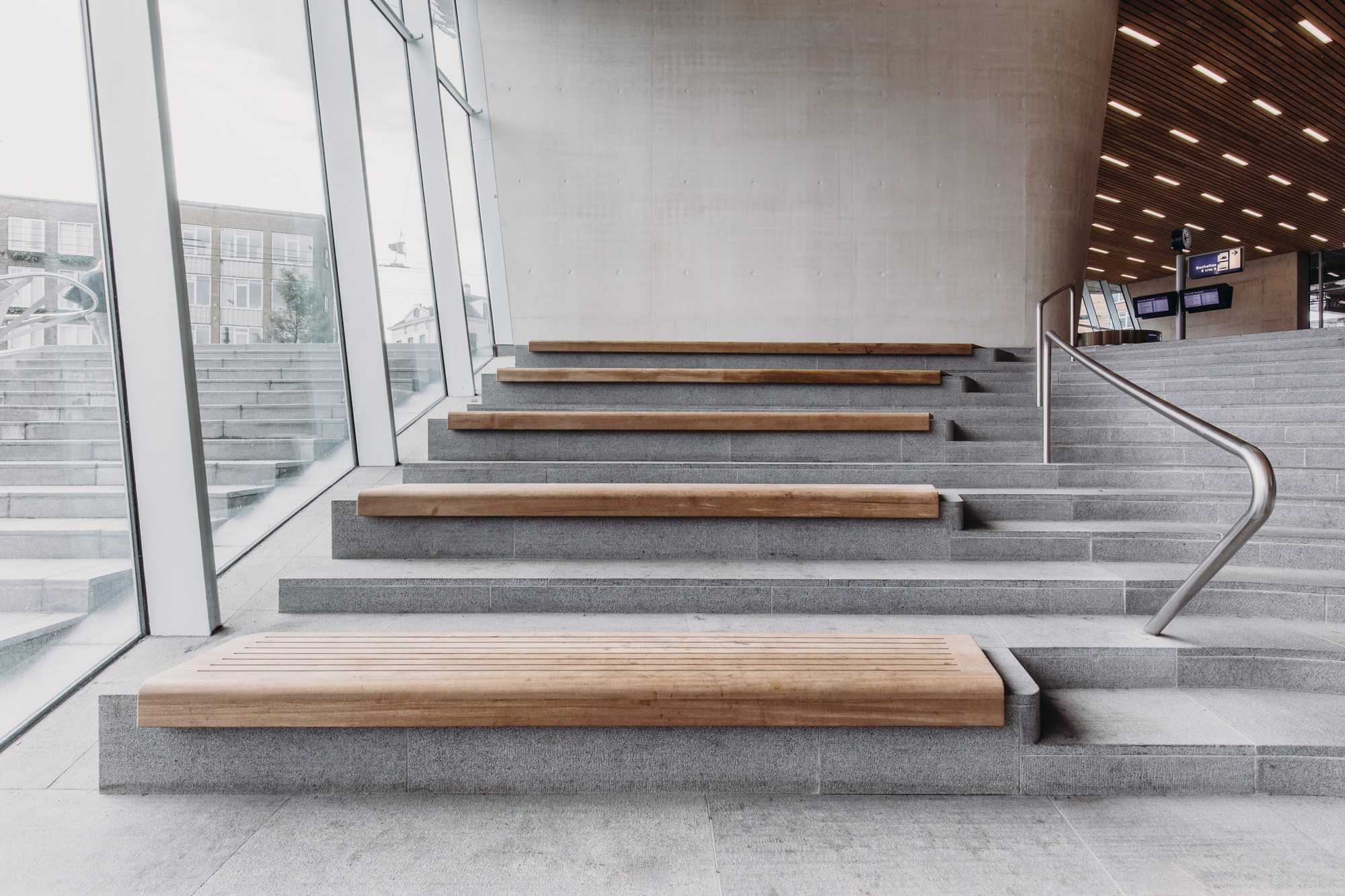
Study: Arnhem Central Station Platform Seating
This article examines the materiality of the wooden benches on the waiting platforms at Arnhem Central Station, designed by UNStudio. The platform seating forms a small-scale sub-project in UNStudio’s greater Arnhem Central Masterplan. The following article, compiled by our Materials Platform, aims to provide an insight into the design and fabrication process with regards to the bending and processing of wood and the application of protective nano-coatings. Two key aspects present throughout the design process and manufacturing preparations include: bending wood to test its material properties and capacities and experimenting with nano-coatings to balance physical protection and preserving the natural aesthetics.
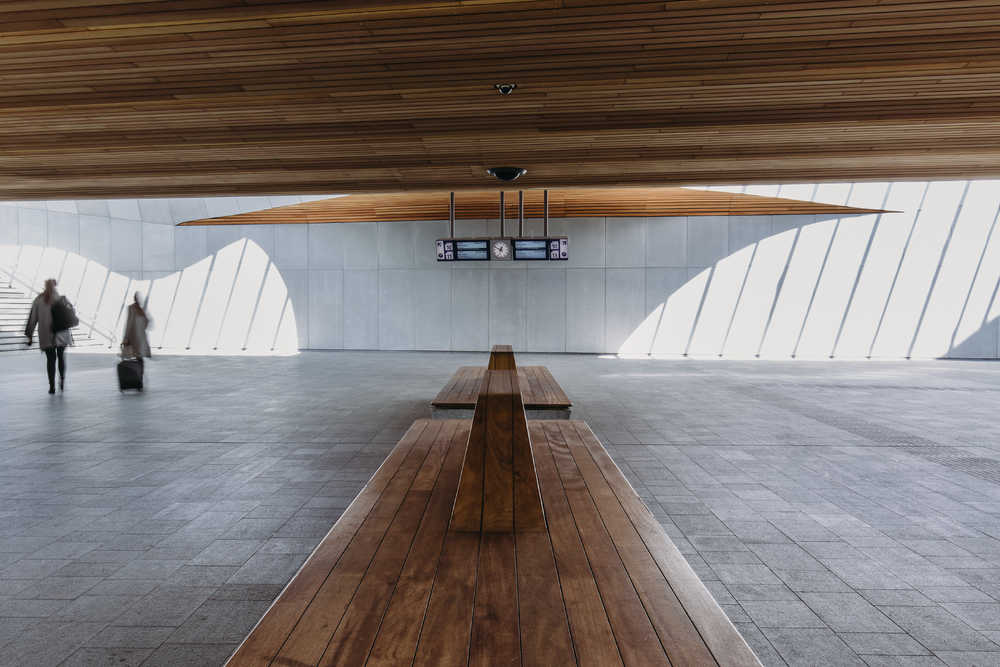
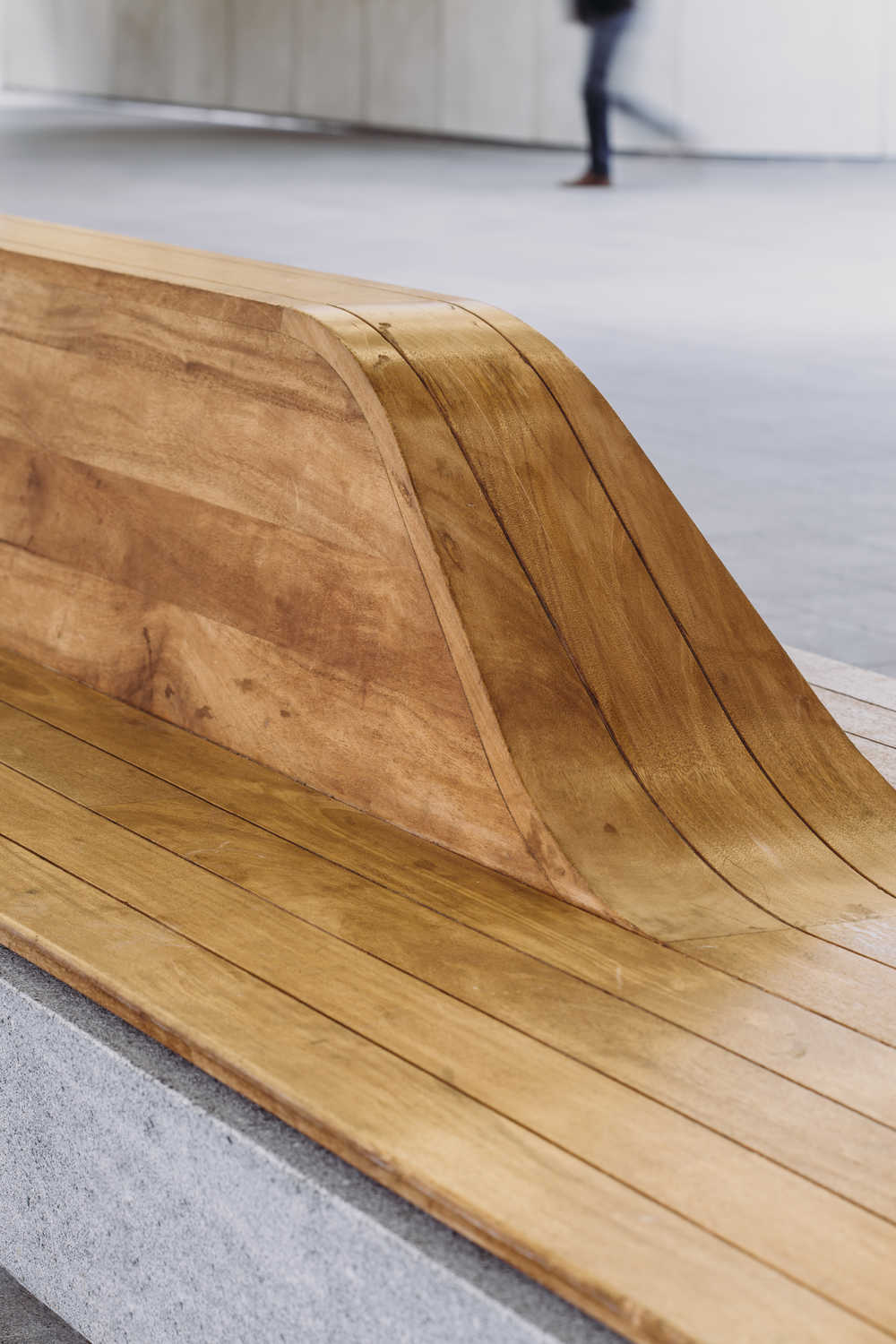
The wooden benches are designed as an integral part of the V-columns that support the Arnhem Central Station platform roofs. This means that the number of separate seating elements, which can become obstacles, can be minimised. The wood that has been selected for these seating elements is Louro Gamela.
Louro Gamela and Louro Amarelo are Forest Stewardship Council certified woods. These types of wood come from the Brazilian Amazon and have a lot in common with hardwoods with respect to their durability. They have a lower density than hardwoods, but their cells are sealed off by a natural wax. This prevents degradation by moisture and water, but it also takes longer to dry the wood before it can be further processed. Louro Gamela is also selected for the benches in the platform tunnel and the facade/interior of the service building. The surface shows minimal veining and substantially consistent colour.
These and other, more exotic woods are imported by Precious Woods, who can readily provide more information and material samples for testing procedures.
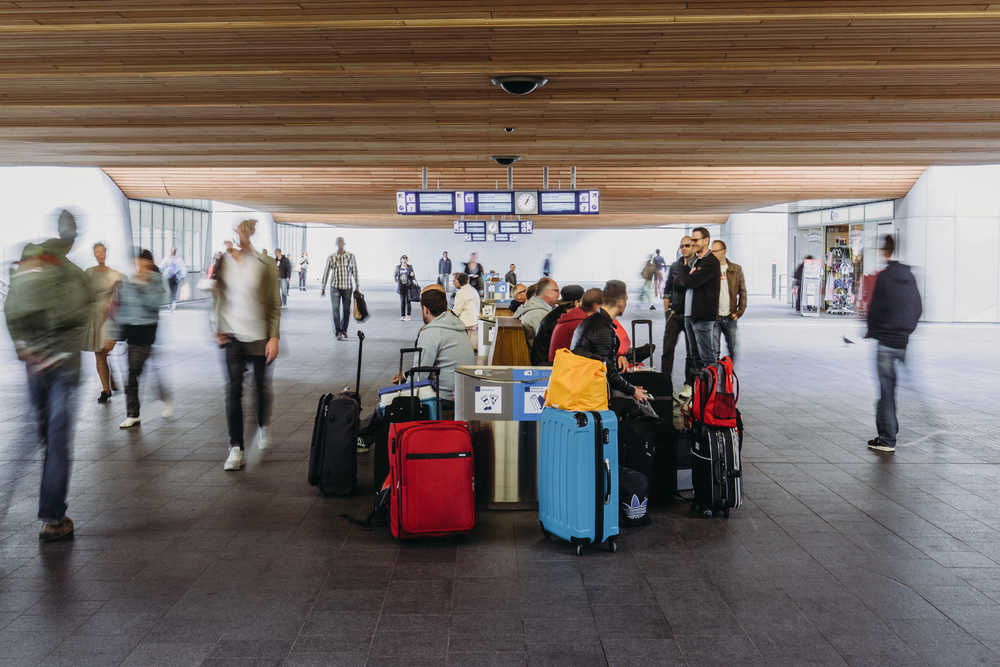
In an intensively used environment with heavy traffic – such as a train station – surfaces need to be durable and easy to maintain and clean. Destructive factors include dirt, moss, mechanical damage and discoloration by UV-light.
In order to protect the wooden benches at Arnhem Central Station, various lacquers, ‘low-pigment paints’ and nano-coatings were tested. The lacquers and paints, however, were found to give the wood a glossy, unnatural finish and are difficult to repair. In addition, when ‘assaulted’ with waterproof markers, special chemicals are required to clean the surface, or alternatively, the coating needs to be lightly sanded and reapplied. This is not an ideal situation in a heavily trafficked environment.
Ultimately, a multi-layered nano-coating gave the ideal results for the wooden benches. Such nano-coatings are easily applied by brush or spray and seep deep into porous materials. Because of the natural wax present in Louro Gamela, the coating only permeates the top 4-5 millimeters of the wood. With other materials however, such as concrete or natural stone, this impregnation can increase to 10-15 millimeters, depending on the porosity of the material. Once applied, the coating dries quickly and as it is colourless (and not a top-coating) the wood maintains its natural colour and texture.
The benches were treated with two layers of BioCoat Wood from Bionic Technology and one layer of Nanocoat W1 from Ncoat. The BioCoat serves as the main element of protection against discoloration, water penetration and mosses. The Nanocoat W1 serves as anti-graffiti protection and makes it easier to remove dirt, chewing gum and other stains. Waterproof stains can be easily removed while leaving the coatings intact. This can be crucial, since many reputed ‘nano-coatings’ are actually surface coatings that don’t penetrate into the material. This means that, in some cases, coatings can actually be inadvertently polished away during cleaning processes.
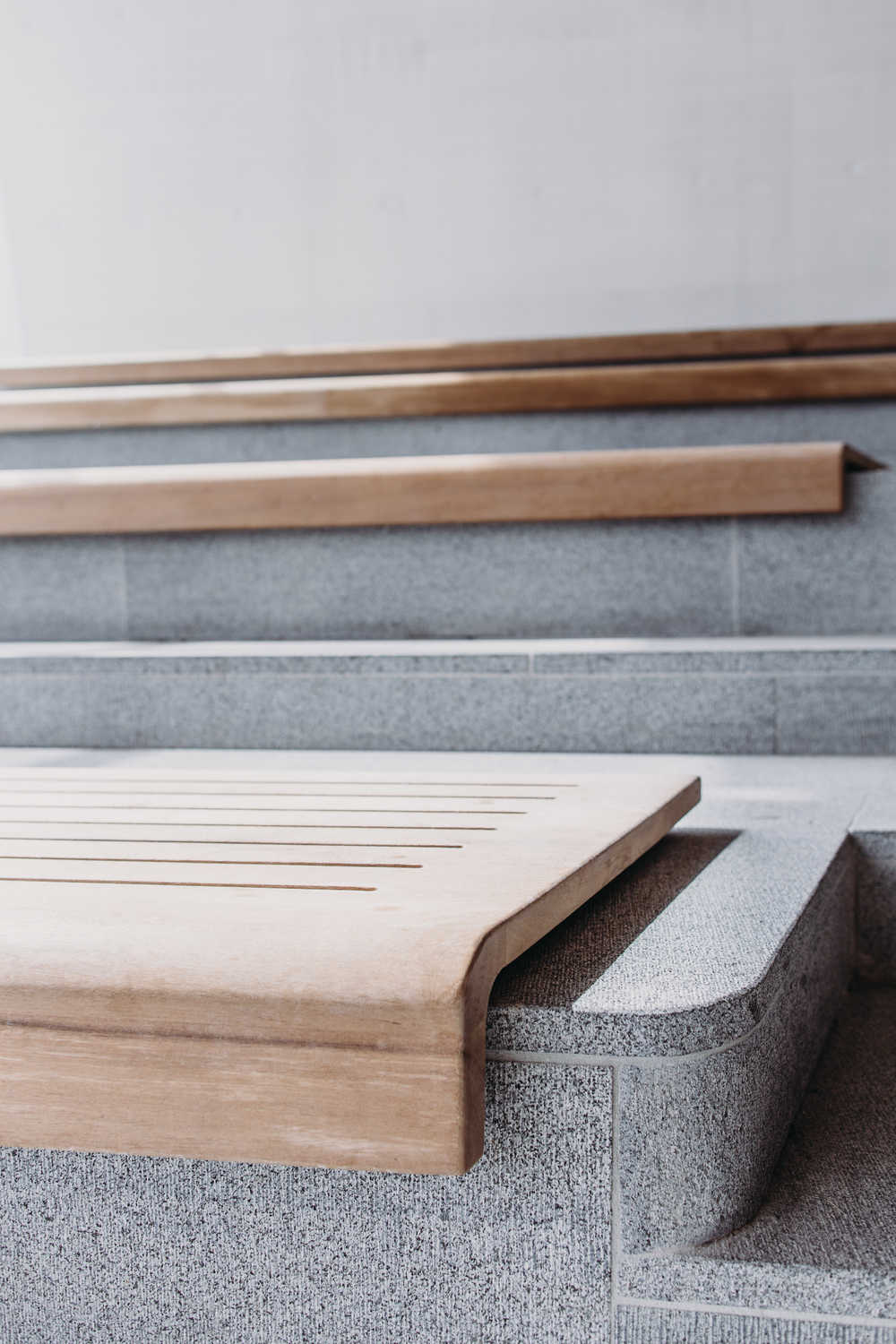
The most important word on the subject of bending wood is ‘testing’. In this case, one party claimed to have the capacity to bend the 4-5 cm thick Louro Gamela using steam and pressure moulds, while another party advised to laminate the wood in layers of 4-5 mm. Since one of UNStudio’s goals was to prevent any visible ‘seams’, lamination or visible cross sections of the veins, laminating and milling were thereby rejected.
However, when the testing began, it became clear that bending in a tight radius resulted in cracking and deformation of the veins. To determine if this was caused by the natural wax inside the Louro Gamela – diminishing the effectivity of the steam – other woods were tested. But even with oak it appeared to be difficult to achieve a tight radius.
For the second test phase, UNStudio took another look at laminating the wood. Since the thickness of each layer is limited, bending wasn’t a problem. However, since wood is a natural material, it slightly bends back after it is removed from the mold. This shouldn’t have been a problem if this amount could be predicted, but unfortunately this was not the case. In the end, each laminated plank deformed differently.
Another potential solution was to mill part of the top surface into the correct geometry, after assembling each complete seating element. But since the wood consisted of a thinly layered laminate, on some parts the mill would actually penetrate the top layer and reveal the glue layers beneath (and even some hidden reinforcements). For the third and final test phase, it was decided to use a two-layer laminate which would be milled into the correct geometry. Ultimately, this option was successful.
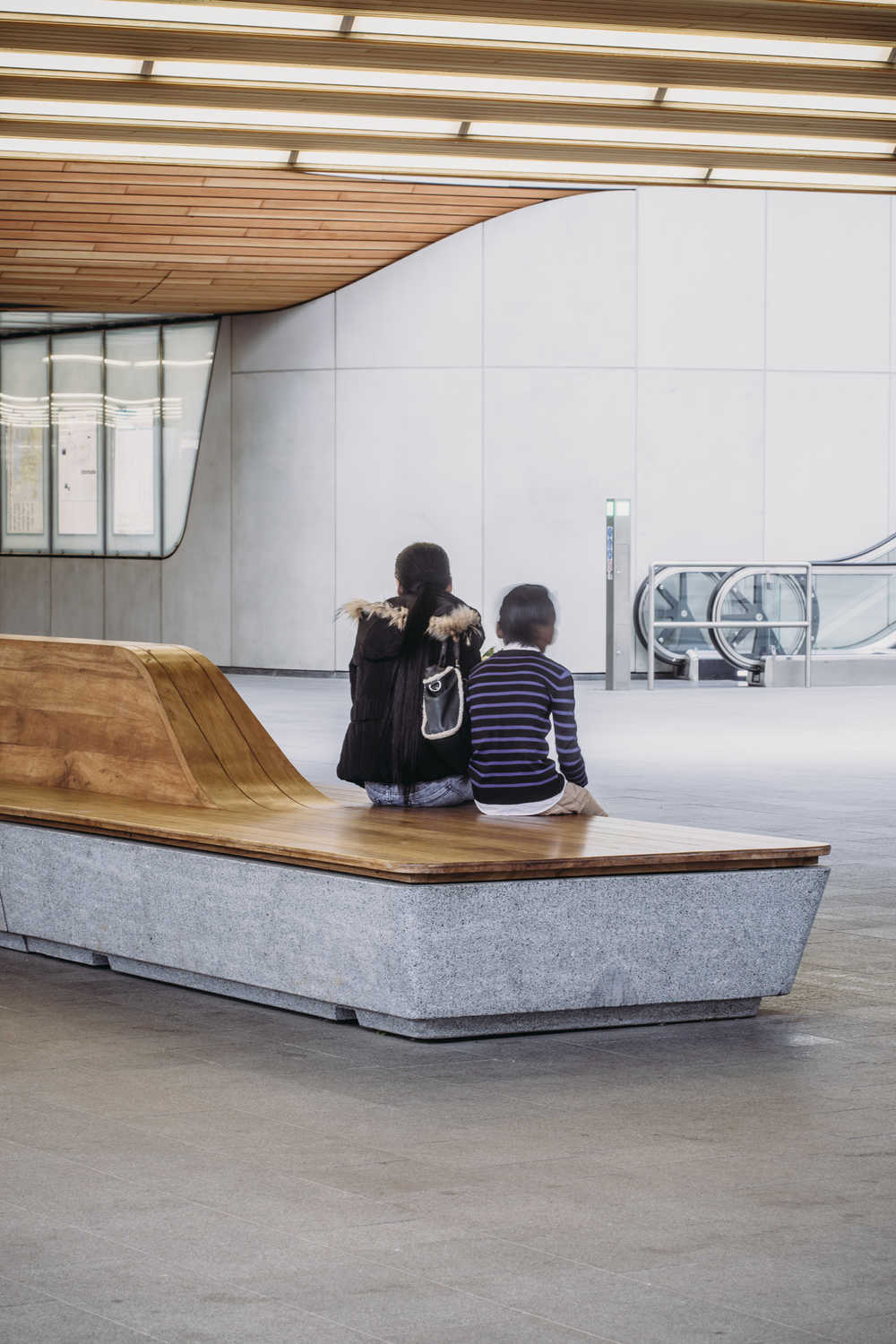
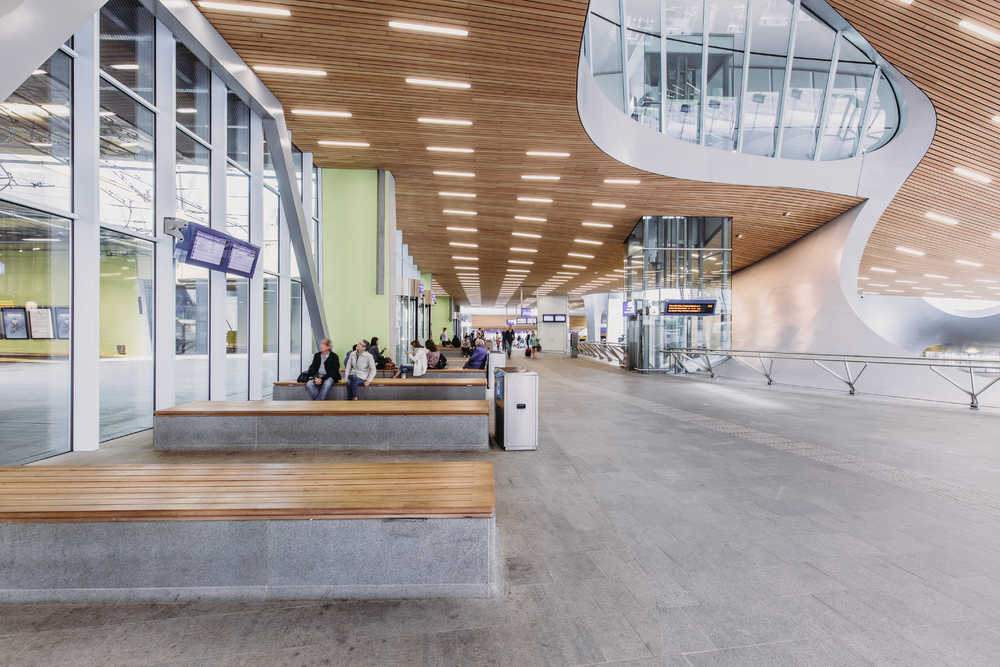
Wooden benches were also installed in the transfer tunnel underneath the platforms of Arnhem Central Station. The top surfaces of these benches are made from the same wood – Louro Gamela – as the aforementioned platform seating. The lessons UNStudio had learned prior were therefore implemented during the design and fabrication processes for these benches. In this case, the wooden seating is fixed to a natural stone plinth, which has also been treated with nano-coatings.
UNStudio Team: René Toet
